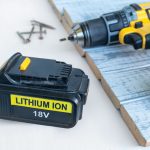
Like many people starting their businesses back in the 70s and 80s, they wanted a building from which they could run their business at the lowest possible price. “Shade and shelter,” is what it used to be called. Many small businesses spent very little on maintaining their buildings, as the focus was on making money and surviving the ups and downs of the economy.
Today, investing in an old metal building can be a smart move. Back then, the emphasis was on affordability, not maintenance. Fast forward 40 years, and while the building may be paid off, it likely needs attention. Current zoning laws, building codes, and impact fees add real meaning to the phrase “they don’t build ’em like that anymore”—that’s because they cannot. Further, it costs significantly more to build today. This creates an enormous potential for these old structures, and with more than 1.6 billion m2 (18 billion sf) of 20- to 50-year-old metal-roofed buildings in the U.S., the market is full of possibilities.
So where do they start?
Always start with the roof retrofit

Most early-generation metal buildings have screw-down roofs. These were 30-year life roofs usually installed with five-year life fasteners. They are easily recognizable because, when viewed from above, they appear to have chicken pox.
A leak-free, durable roof is the cornerstone of any rehabilitation project. Retrofitting that old roof can do amazing things for the building:
- Upgrade from screw-down roofing to standing seam.
- New roof finish warranties are now up to 50 years; weather-tight warranties are also available. ● Unnecessary rooftop equipment can be eliminated.
- Harden the building to comply with current building codes and reduce insurance costs.
- Increase the strength of the existing roof purlins to handle the retrofit and future equipment.
- Add solar panels to reduce energy costs.
- Explore Internal Revenue Service (IRS) Section 179 tax deductions and energy credits.
Next, review the building wall openings:
- The attachment and strength of windows has changed dramatically over the years. Look at storm-resistant and energy-efficient windows.
- Overhead door failures are most common in older buildings. Failure of these large openings can result in major building damage, even failure of the structure. Newer overhead doors and jambs are designed to today’s strict building codes. The newer door will have heavily reinforced panel sections and rolling tracks.
- Peronel doors and security hardware should also be upgraded.
Finally, look at the exterior aesthetics of the building:

- Metal walls are notoriously susceptible to damage in the lower 1.2 m (4 ft).
- Look at a wainscot in those lower areas and then protect them with necessary traffic barriers. There are now several stone and brick systems that fit well with metal building systems.
- Upgrade the building entry with entry canopies, a pergola, landscape areas, or other enhancements to add curb appeal.
- Paint the walls if needed. Metal wall panels can be easily cleaned and painted.
If one owns one of these “diamonds in the rough,” they should talk to their local metal building contractor about restoring their building. Contractors should reach out to building owners who could benefit from a rehab, or even consider buildings they constructed in the past. They can brainstorm ideas or consult with an architect for input on how to make the building align more closely with the owner’s corporate identity, or simply give it more market appeal if it is ready to be sold.
Making the old building solid, code compliant, and giving it an aesthetic upgrade could easily double its useful life, making it a great investment for the future.
Dale Nelson is the President of Roof Hugger, LLC. Tampa, Fla. Founded in 1991, Roof Hugger became a division of the LSI Group, Logansport, Ind. in 2016. Roof Hugger is a nationally recognized manufacturer of retrofit framing systems for existing metal roofed buildings. Dale holds a Class-A Florida Contractors License and a Florida Real Estate Brokers License. He has been in general contracting since 1973.





